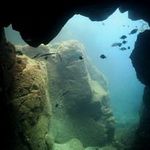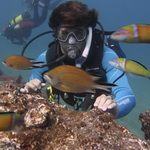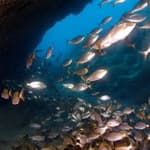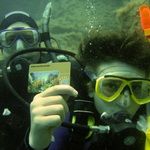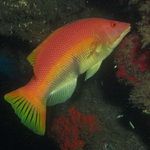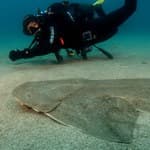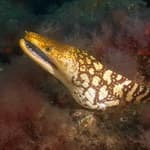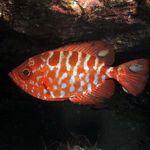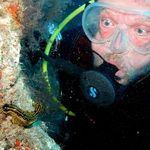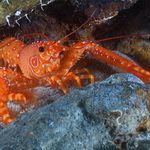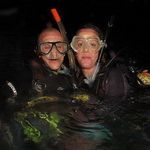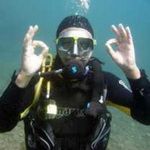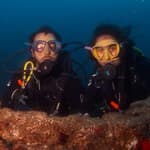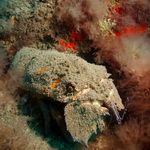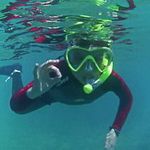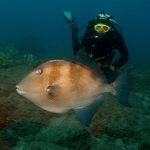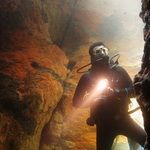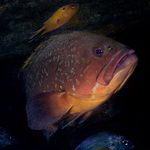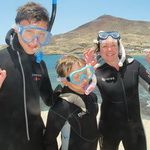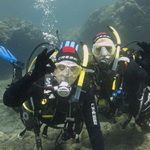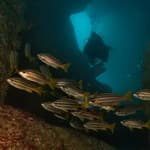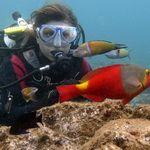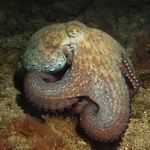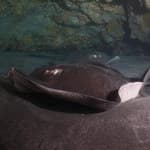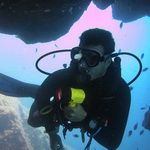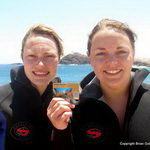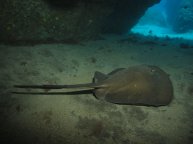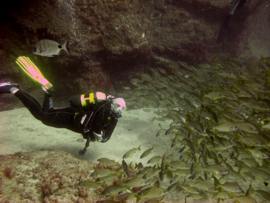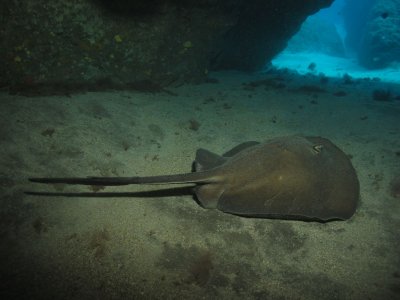SIGHTING OF THE ANGEL SHARK SQUATINA SQUATINA BY DAVY JONES DIVING IN THE ISLAND OF GRAN CANARIA.
Krupskaya Narváez1, 2, Filip
Osaer1, 2, Brian Goldthorpe3,
Eduardo Vera3 and Ricardo Haroun1
1BIOGES Centro de Investigación en Biodiversidad y
Gestión Ambiental, Facultad de Ciencias del Mar. Universidad de
Las Palmas de Gran Canaria. Campus de Tafira s/n, 35017, Las
Palmas de G. C. España.
2SQUALUS, Fundación colombiana para la investigación y
conservación de tiburones y rayas. Carrera 64 A No. 11 A-53,
Cali, Colombia.
3DAVY JONES DIVING, Calle Luis Velasco 39, Playa de
Arinaga, 35118 Aguimes, Las Palmas de G. C. España.
krupska@gmail.com, filiposaer@gmail.com y
webinfo@DavyJonesDiving.com
INTRODUCTION
The stocky angel shark Squatina Squatina is a temperate-water bottom-dwelling shark which prefers mud or sand bottoms where it normally lies buried with only its eyes protruding. It can be found from close inshore to at least 150m depth. Originally abundant from Scandinavia to North-western Africa (Mauritania and the Canary Islands), including the Mediterranean and the Black Sea. The current distribution appears to be reduced from this historic range, as a result of severe population depletion, local extirpations, and some contraction in range. It is now considered to be extinct in the North Sea (ICES ACFM 2005) and is no longer encountered in most areas of the northern Mediterranean. The species is critically endangered according to the red list of threatened species of the IUCN. There is an urgent need to confirm the status of this species in the southern Mediterranean, Canary Islands and other areas where populations may still persist (Morey et al., 2006).
STUDY
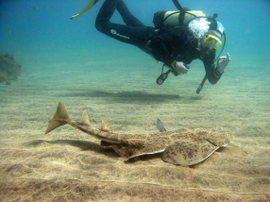
Recreational diving is a promising activity in the Canarian coasts, where the attractive attractions for divers are the diversity of fauna and flora, and good temperature and visibility. The angel shark and different types of rays are regularly observed from short distance. Divers can contribute to the study of habitat use of the critically endangered angel shark by registering sightmentssightings. From June 2006 until September 2007 the dive centre "Davy Jones Diving" has greatly contributed to this by recording the following characteristics during interactionwhen they sighted with angel sharks: name of observing person, location, number of individuals, time, temperature, depth, size, sex, distance from shore, activity and reaction towards the diver.
RESULTS
In the period of June 2006 until September 2007 a total of 100 interactions with angel sharks were registered. The months with the highest number of observations were January, February, March and May (18, 14, 13 and 17 respectively) (Fig. 1). 86% (83 out of 96) of the observations were adult sharks (Fig. 2). In 42 of the 100 cases it was possible to identify the sex of the individuals of which 19 were males and 23 were females. Males were seen between November and May while females were seen mostly throughout the year. 83% (74 out of 89) of the interactions occurred at less than 50m from the coastline. The range of depth was between 3 and 30m. 84% (80 out of 95) of the individuals were found while laying on the bottom (Fig. 3). Most (93%, 14 out of 15) of the individuals that were found swimming occurred between November and May. 78% (67 out of 86) didn't react to the presence of the divers. Only 12% (9 out of 73) of the sharks swam away when encountering with the divers while laying on the bottom. This number increased to 38% (5 out of 13) when the sharks where found while swimming. A total of 6% (5 out of 86) was were found to approach the divers.
COMMENTS
The results up to date show that the angel shark can be seen all
year round in the Arinaga marine reserve. This study will
continue to follow up the presence of the angel sharks in popular
dive sites of Gran Canaria in order to determine some of the
characteristics of the habitat use of this species.
ACKNOWLEDGEMENTS
We are very grateful to: Annette Goldthorpe, Andy Batty, Jim Darby & Johan Rust of the "Davy Jones Diving Centre" for their continuous registration recording of the interactions with angel sharks. The 'Agencia Española de Cooperación Internacional' (AECI-MAE) for the, funding of Ph D of Krupskaya Narváez and T. Sanchez.
BIBLIOGRAPHY
Morey, G., Serena, F., Mancusi, C., Fowler, S.L., Dipper, F.
& Ellis, J. 2006. Squatina squatina. In: IUCN 2007.
2007 IUCN Red
List of Threatened Species. . Downloaded on 29 September 2007

